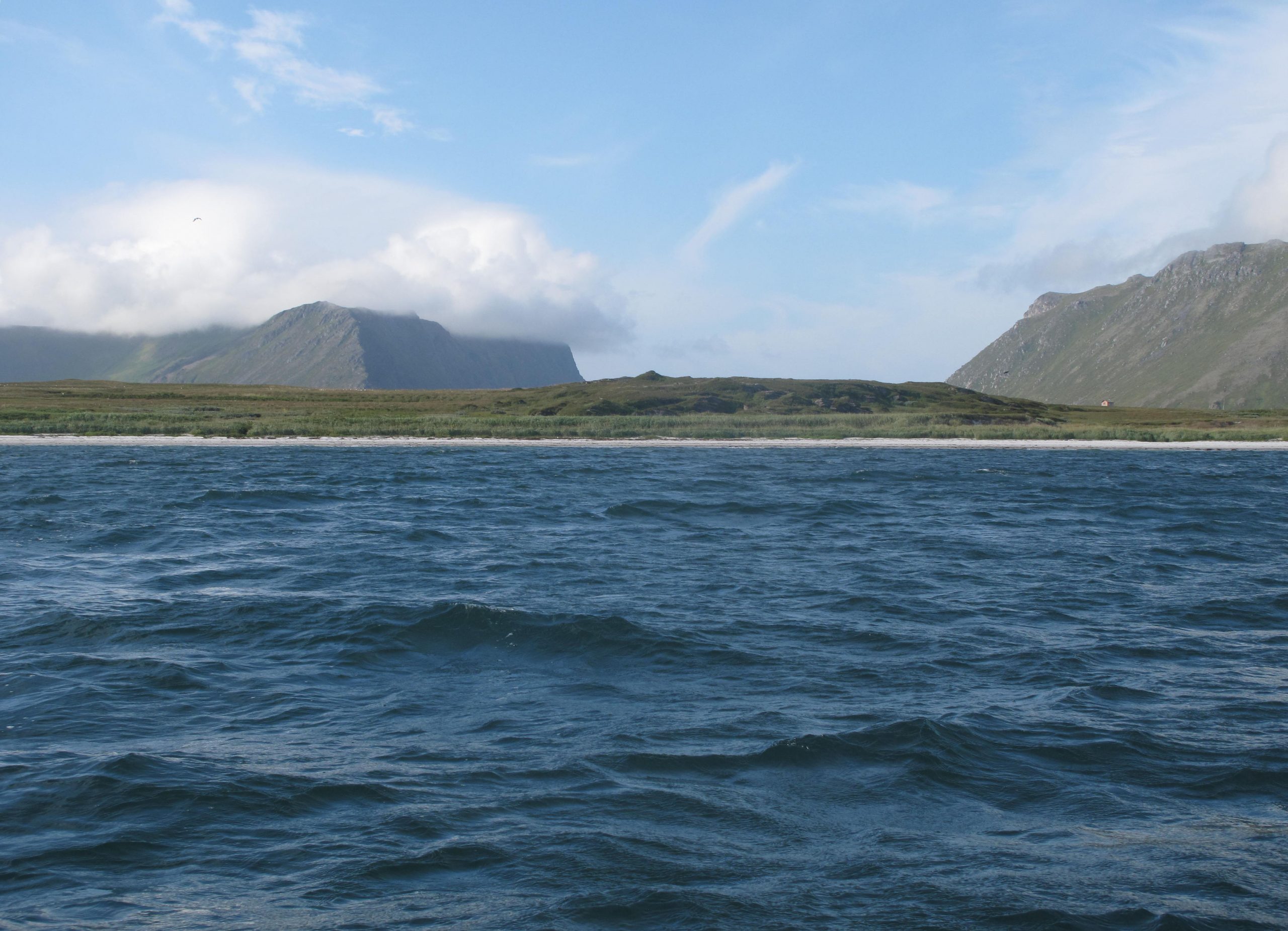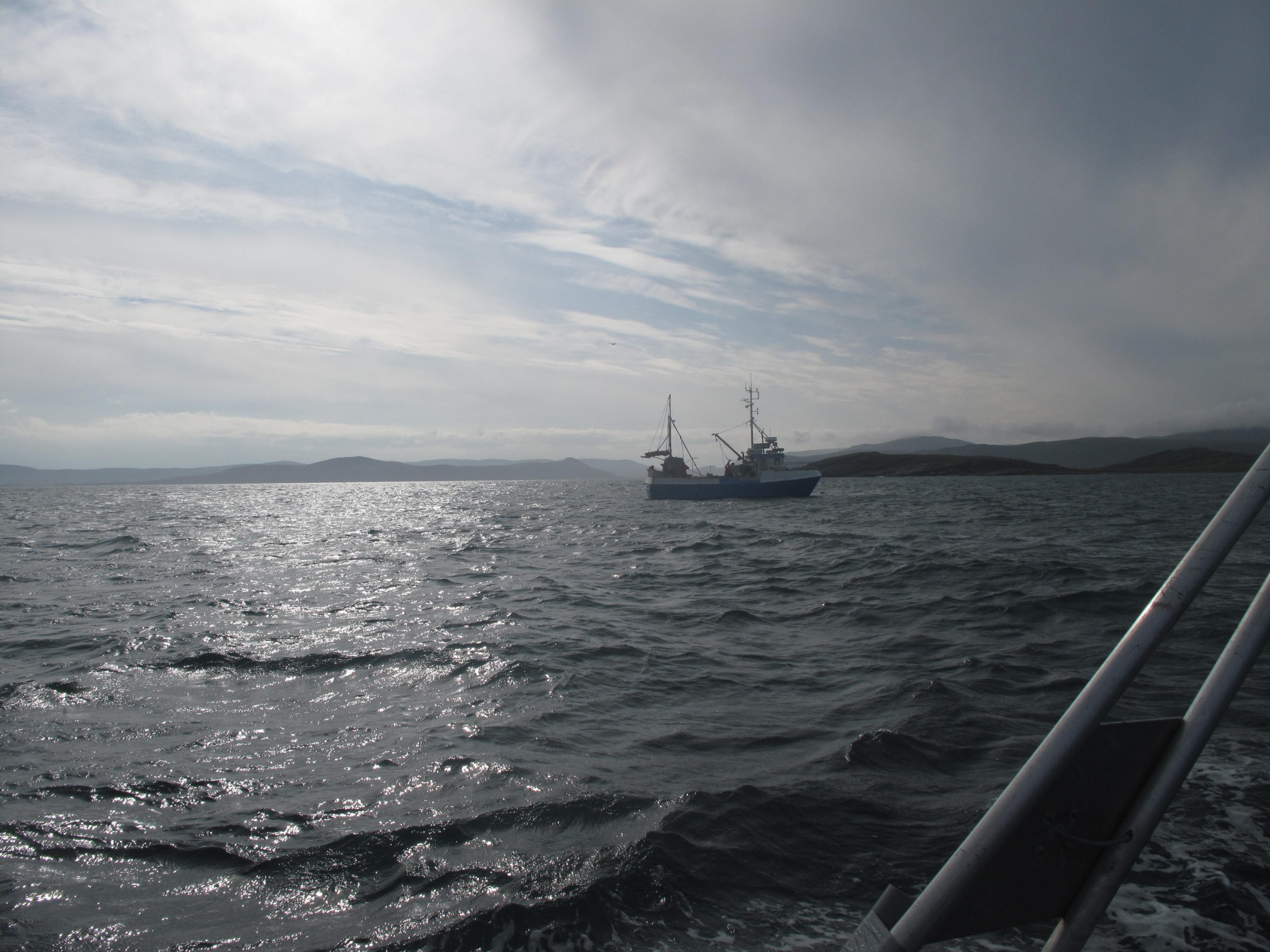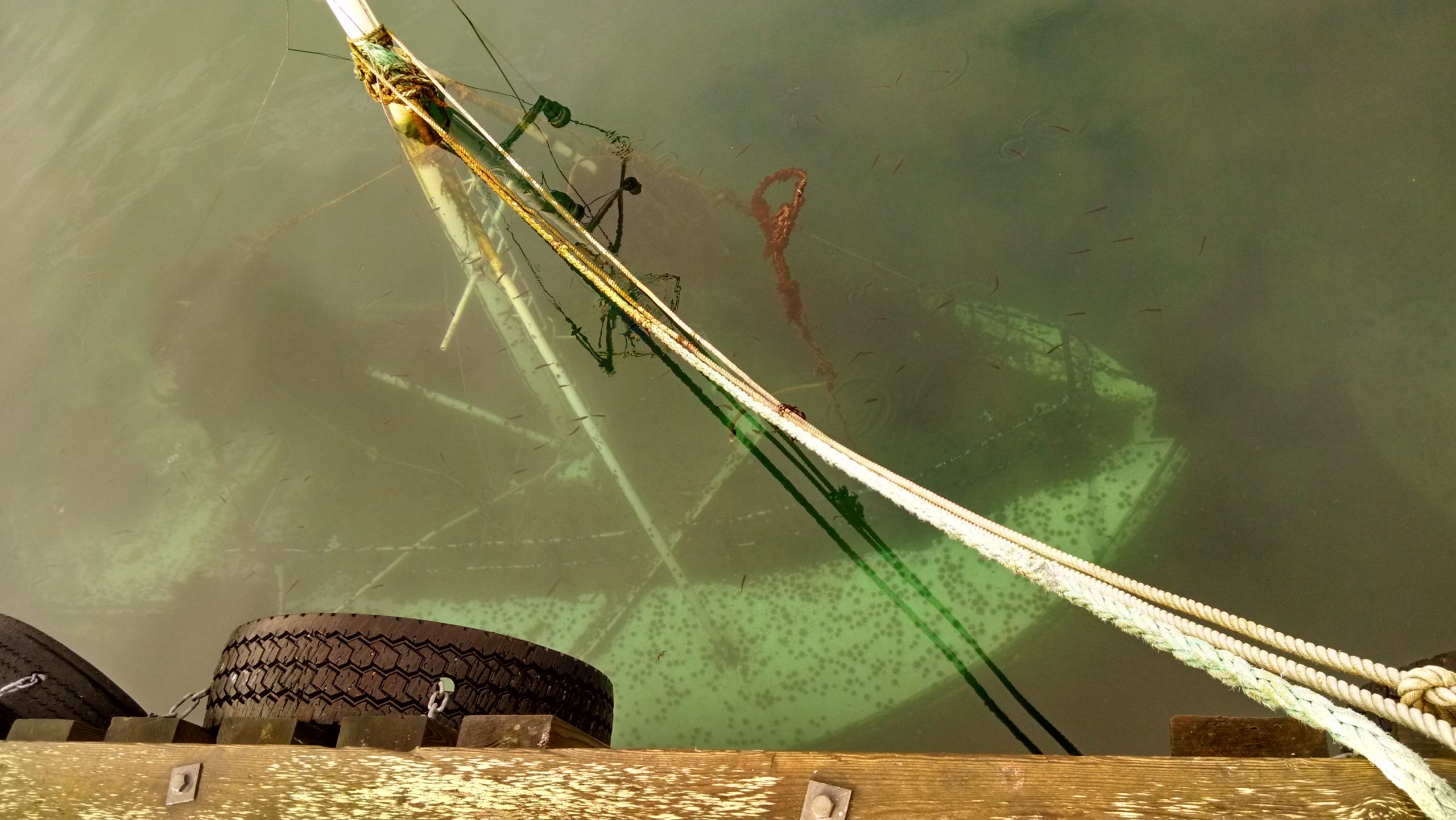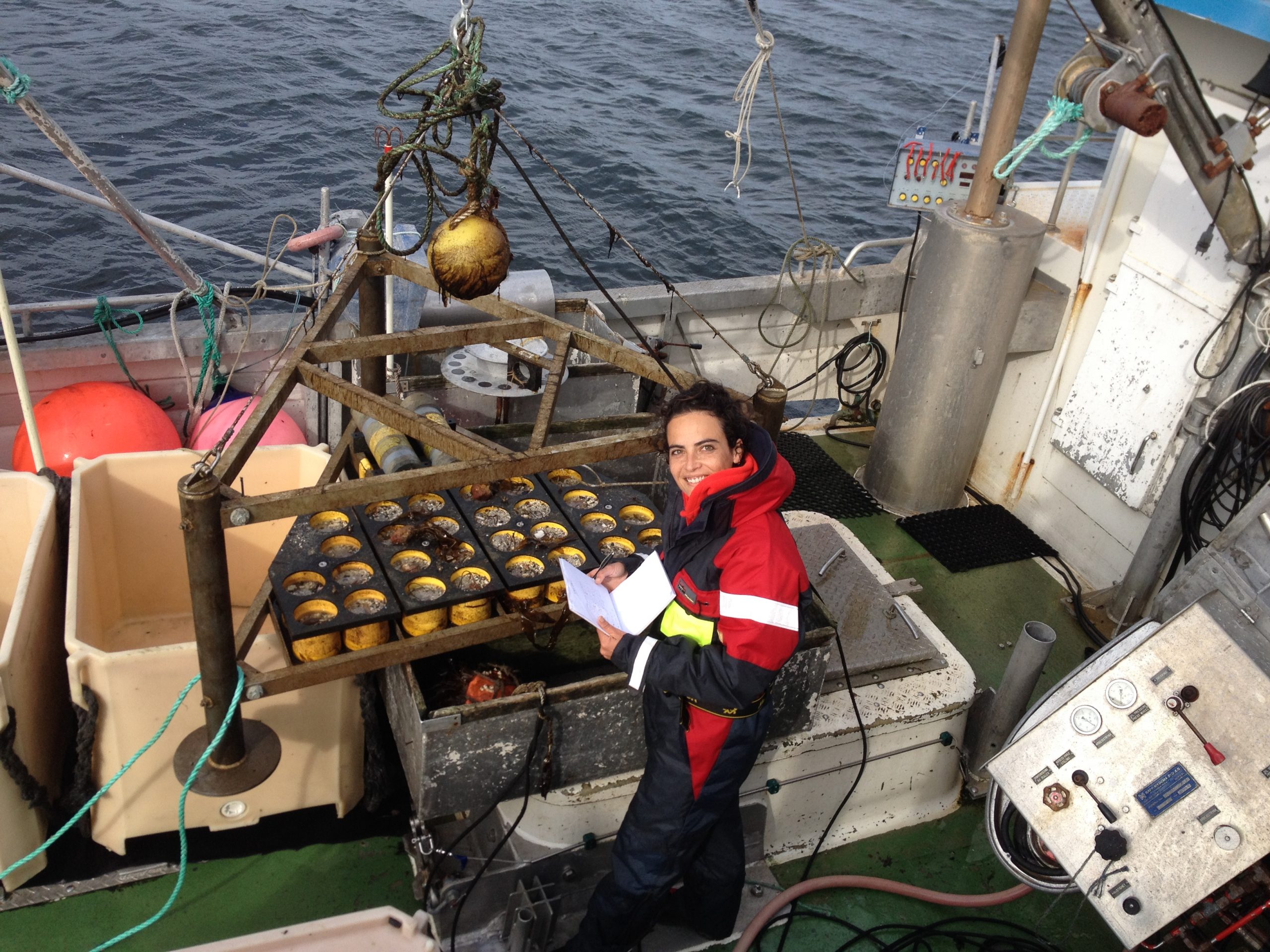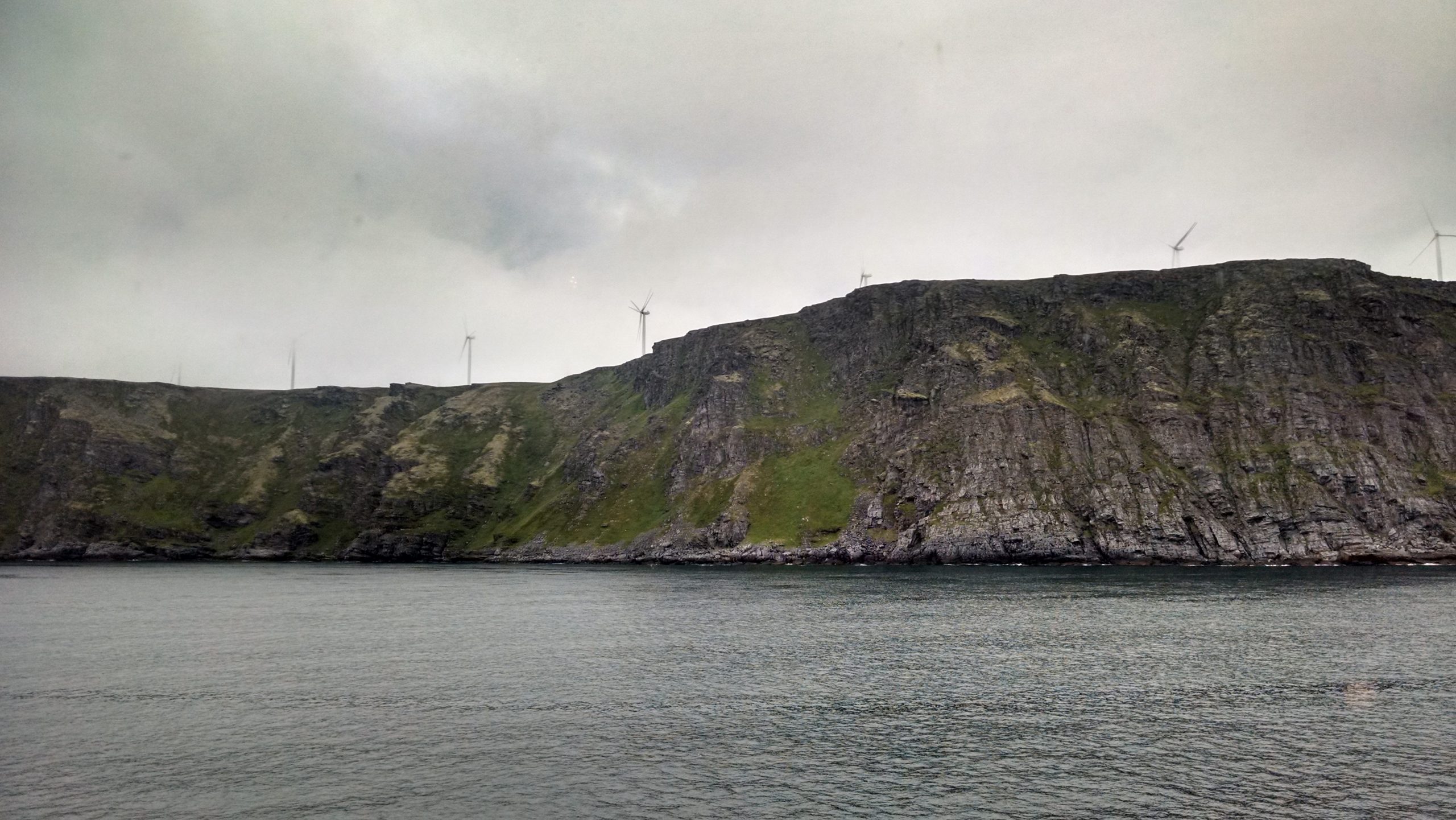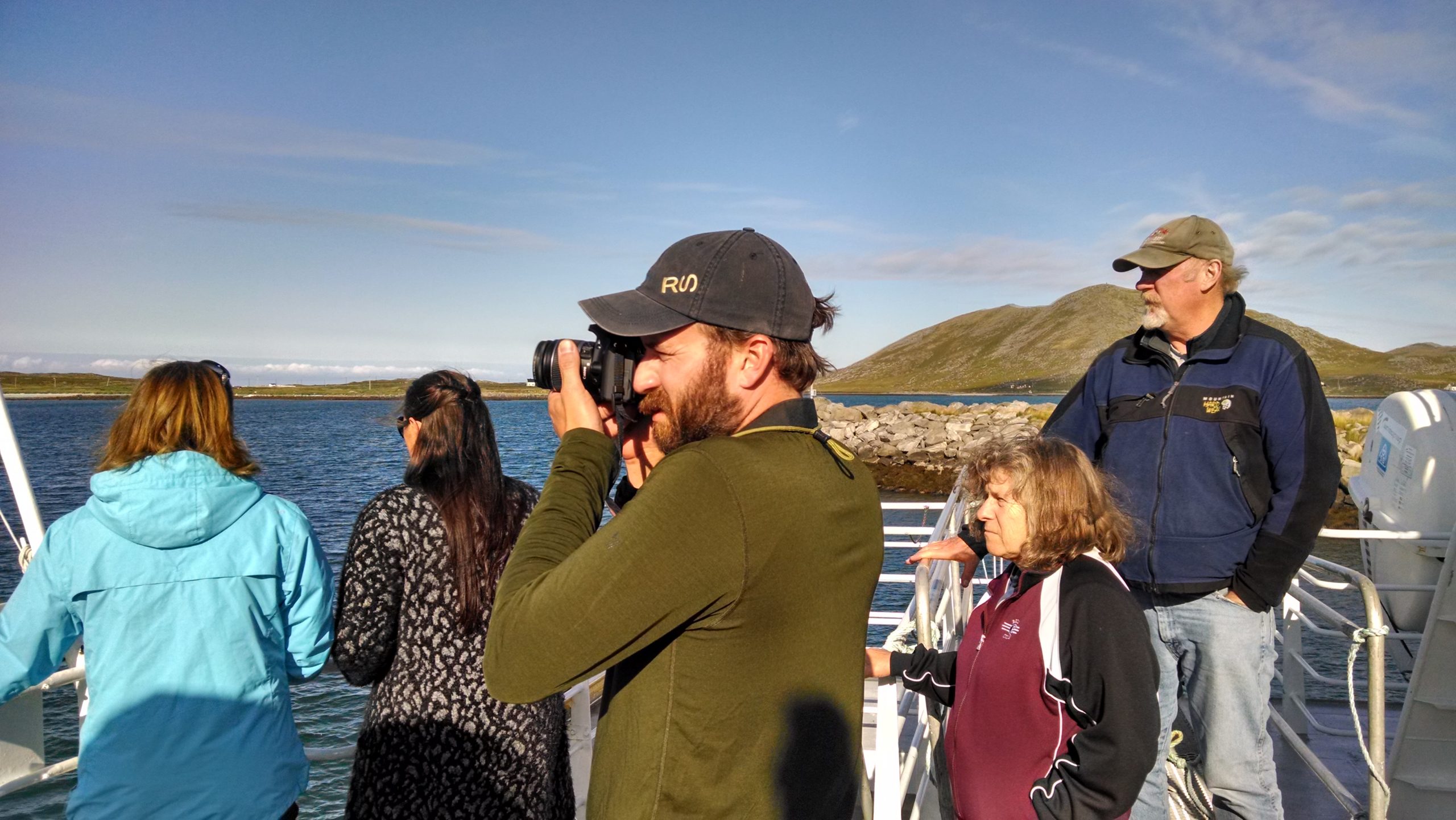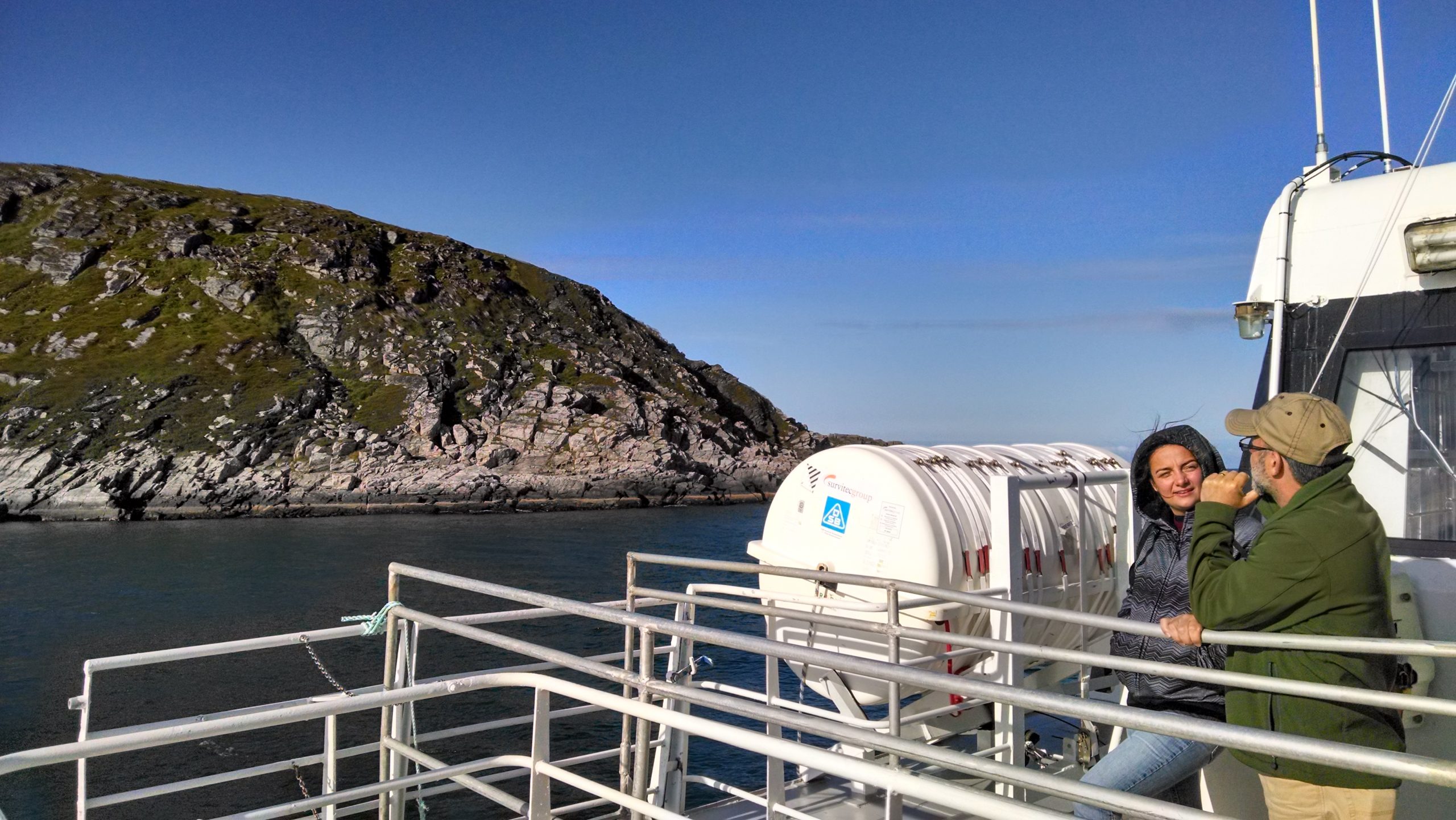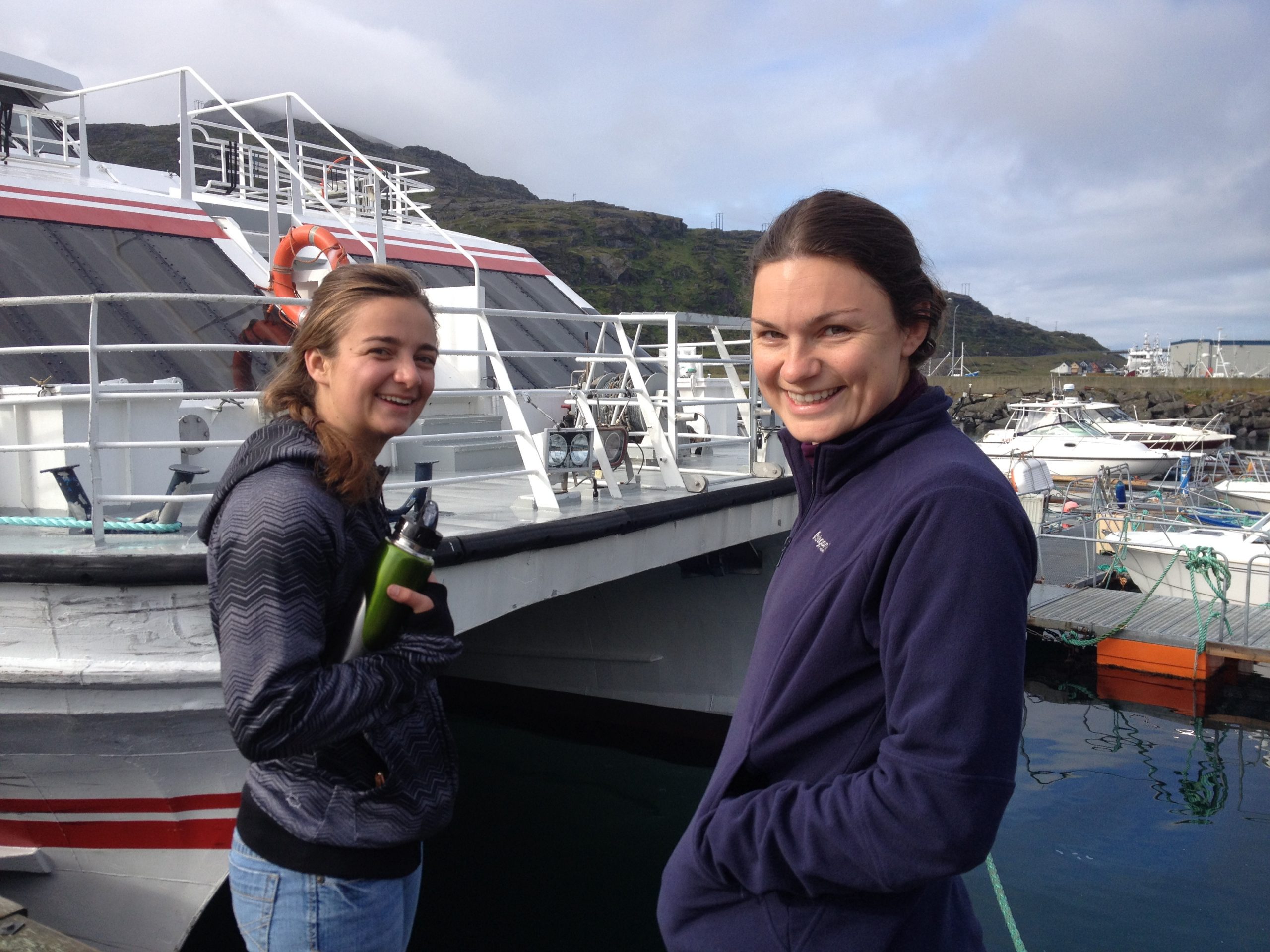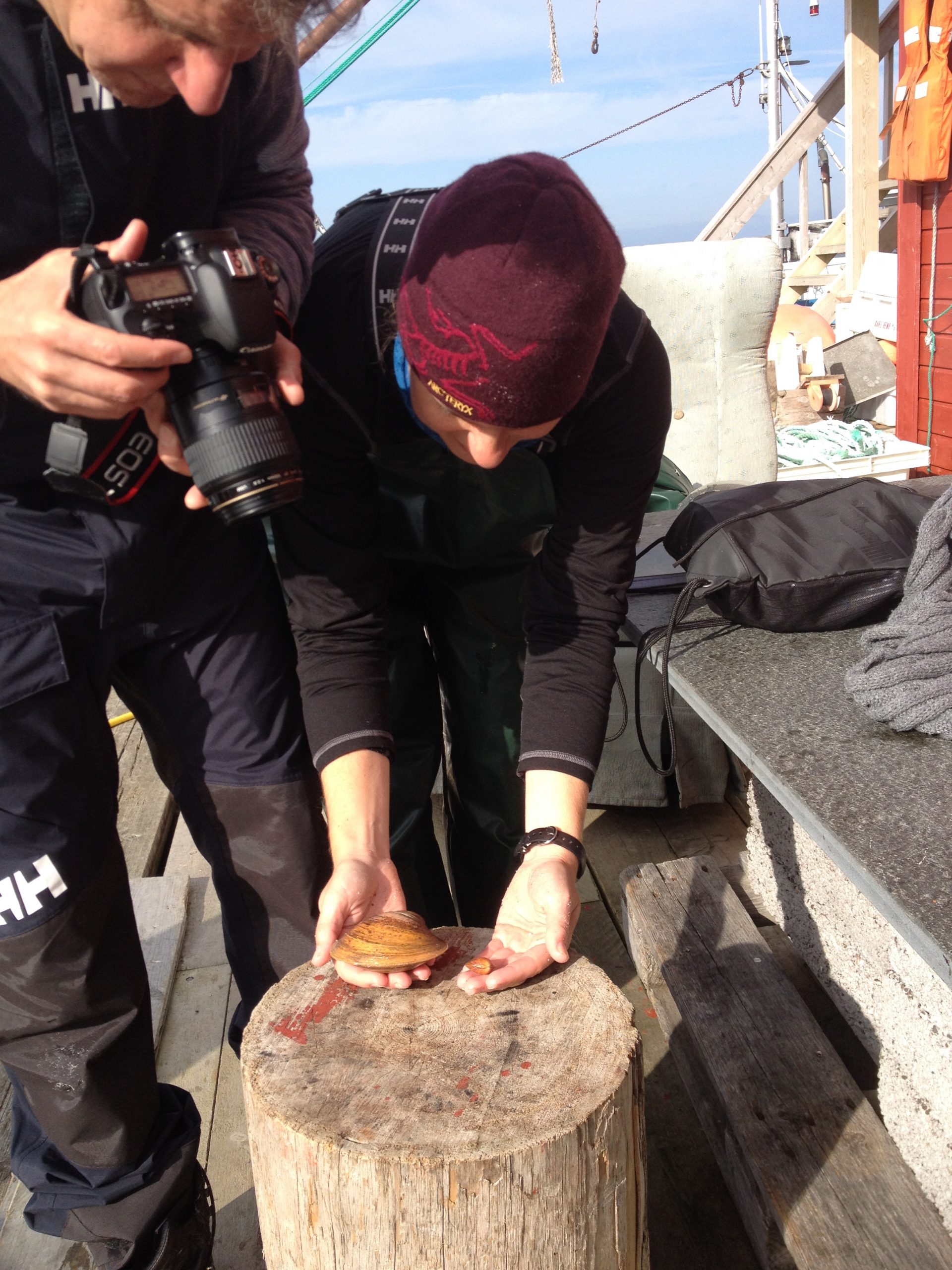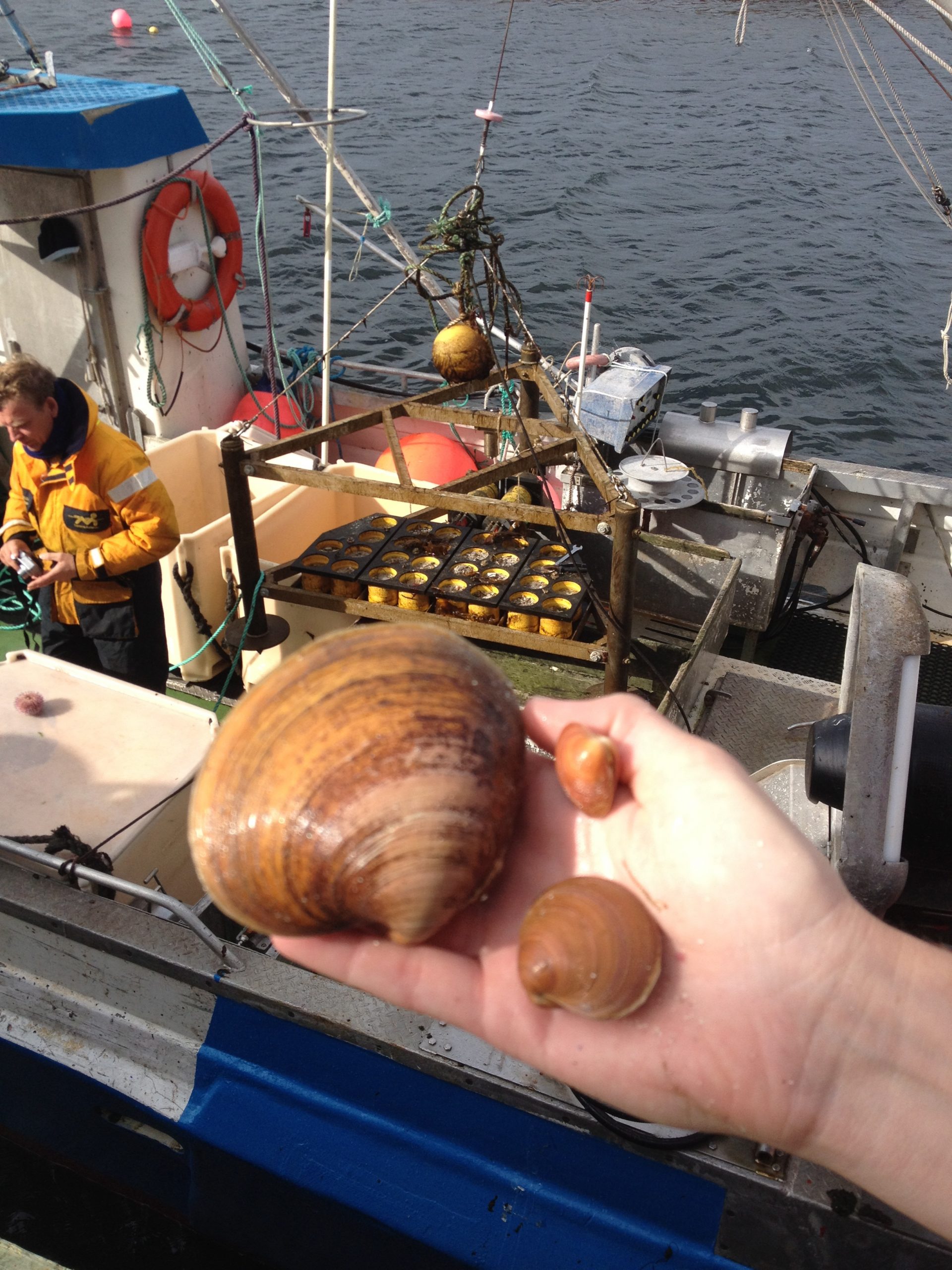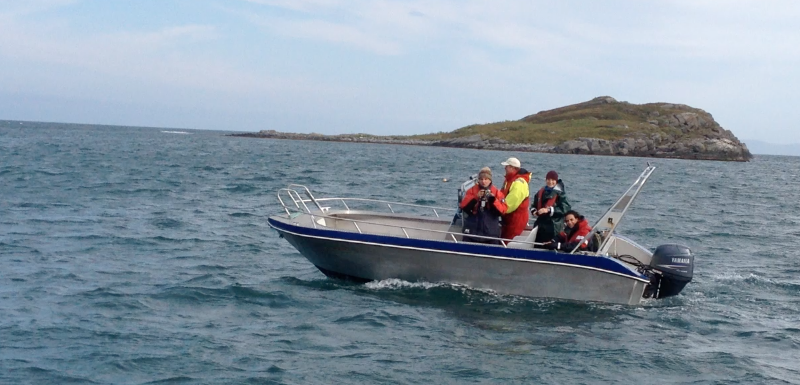
]
Tuesday began with much excitement. We had to get read
y quickly as the good morning weather was to be followed by strong winds blowing up out of the East. Michael Carroll, Maddie Mette, Irene Ballesta, and photojournalist Randall Hyman left dock at 10:30am in a small boat intent on collecting clams from the shallow (6 meters depth) bay. Irene will bring these samples back to the Netherlands to carefully measure their body mass and other parameters. Irene’s project explores the dynamic energy budget of A. islandica, in other words, how the clams use energy throughout the year for tissue growth vs. shell growth vs. reproduction and how it relates to environmental variables such as temperature, salinity, turbidity, etc. The shells from this project will then make their way to Iowa State University, where Maddie Mette will examine the shell growth increments in more detail. Maddie’s project involves cross-matching shell growth records to create a multi-century Master Shell-Growth Chronology (similar to how tree-rings are studied) as a way of reconstructing sea surface temperature and salinity beyond the instrumental record.
Two dredge pulls produced 50+ individuals, enough to fill our research needs for the shallow-water site. We were surprised to have collected two juvenile clams (4 to 5 annual markers were visible on the exterior). Usually these individuals are not large enough to stay in the net that is connected to the back of the dredge. They are particularly useful for two reasons: 1) they indicate the population here at Ingøy is healthy and recruitment has most certainly occurred in recent years and 2) by microsampling the carbonate material from these specimens, we can get a very high resolution oxygen isotope record to match to our temperature and salinity data.
The “big boat,” operated by our camp host Thorleif, set out a couple hours after the first crew and contained Alan Wanamaker, Aubrey Foulk, Will Ambrose, Rob Witbaard, and Dan Frost. Their mission was to retrieve the benthic lander (think lunar lander) that contains live A. islandica attached to gaping sensors (more on this later) as well as the observational buoys that have been recording temperature and salinity every 30 minutes for the past 2 years. Winds started to pick up around 2pm, so both crews headed back to camp pleased with the day’s progress.
A third crew traversed landward to the beach near Tower Bay, the bay where the boat action was happening. Michael Retelle, accompanied by Julie Retelle, began the reconnaissance mission to sort out the post-glacial history of the island through mapping of the raised beaches and other geomorphological features. Later in the week, more of us will visit the beach to collect fossil shell material for future projects. Tomorrow is likely another stormy day. We will all probably hunker down for more planning and discussion.
